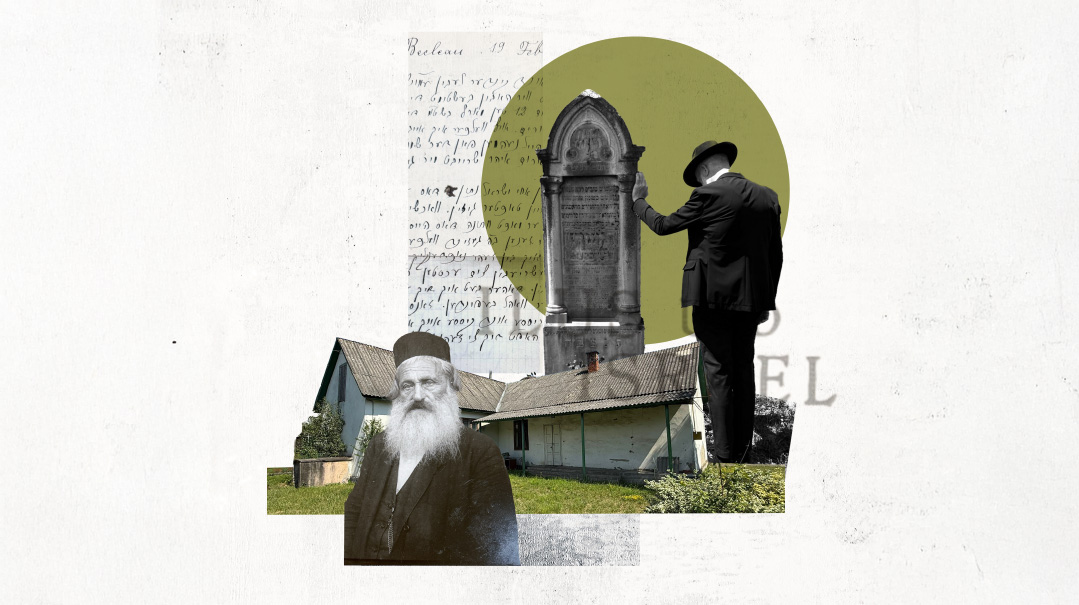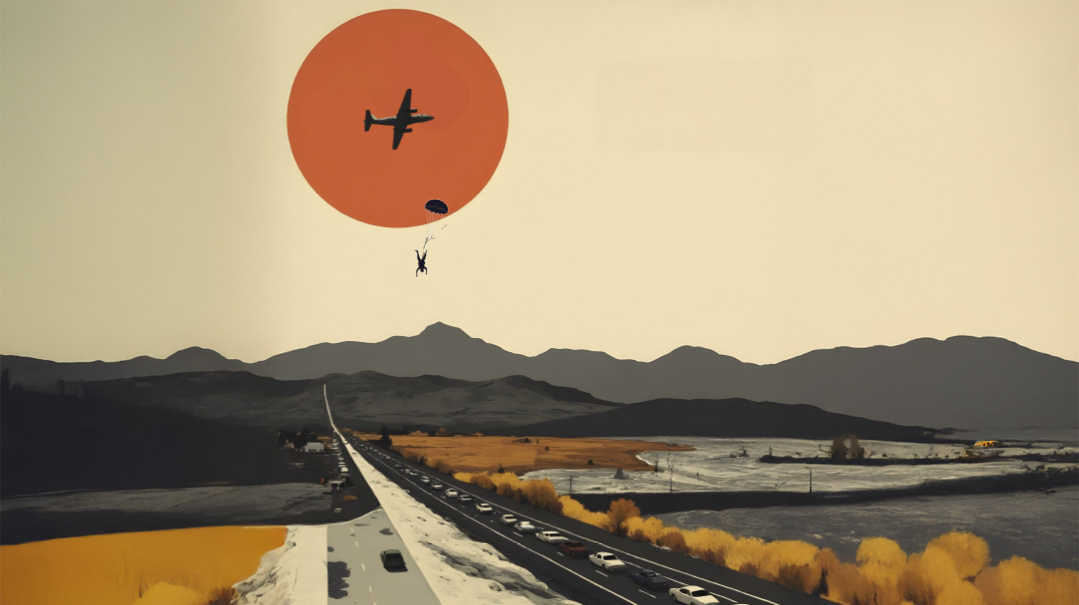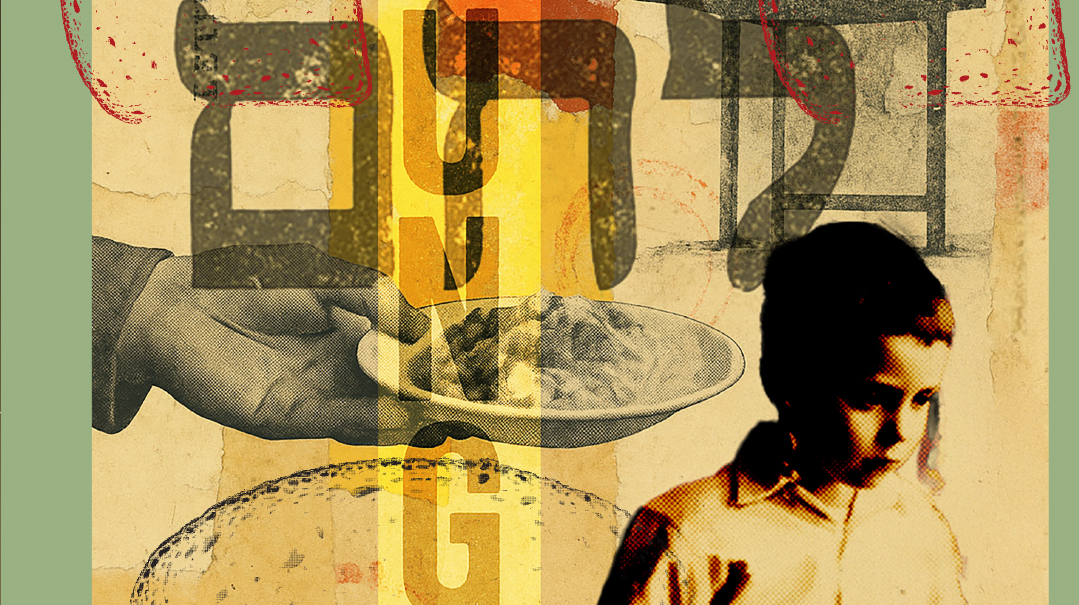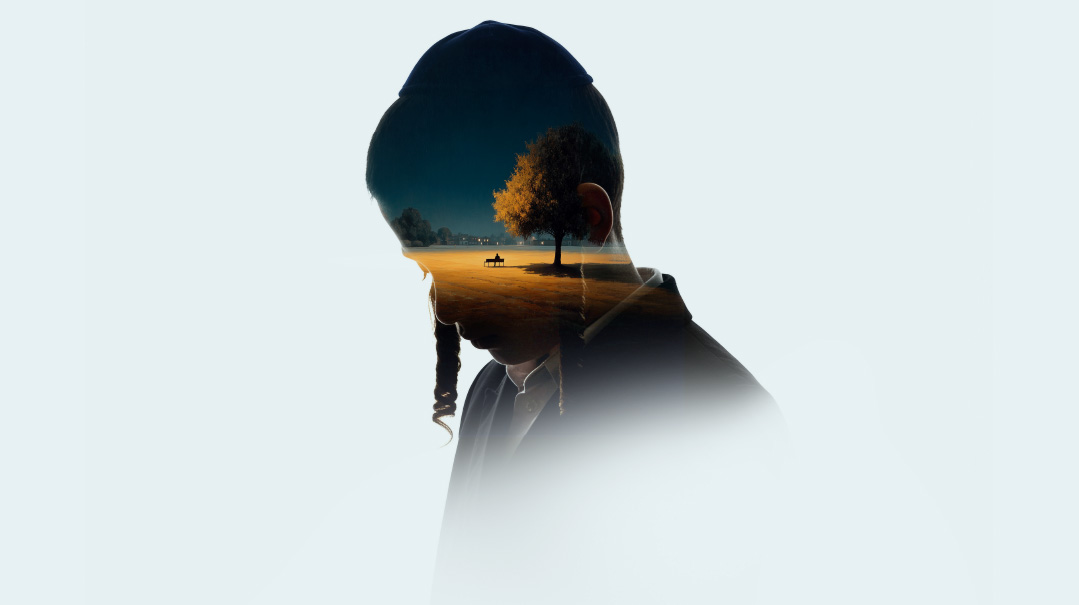The Provider

"My story is one more proof that HaKadosh Baruch Hu doesn’t abandon us, even in the darkest places”
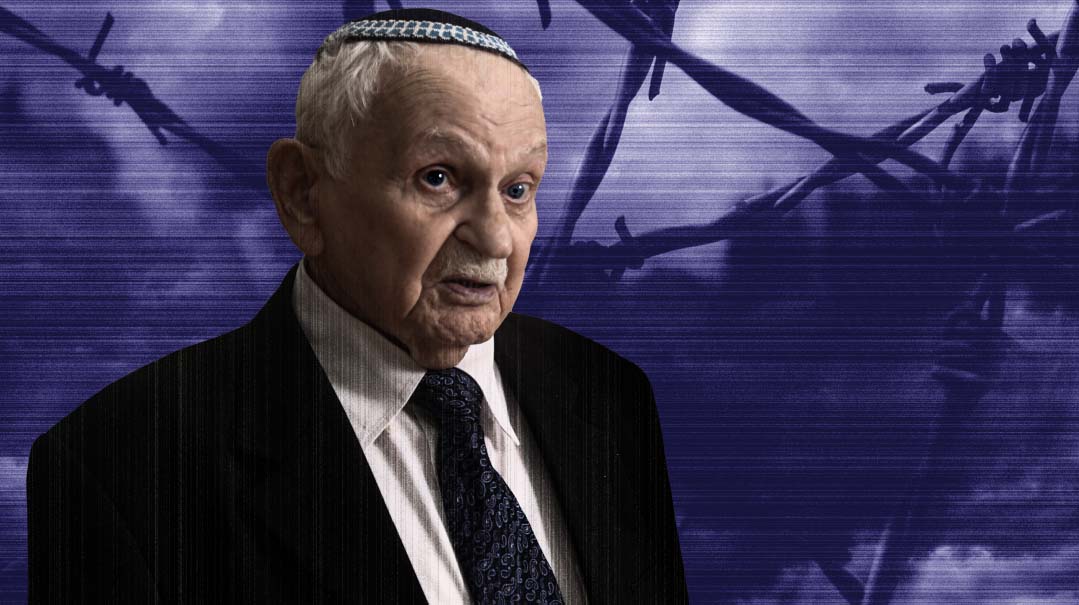
"Although 80 years have gone by, I still have dreams about that day early in the war — the day my father took a pair of scissors and cut off my peyos.”
Ninety-year-old Reb Aharon Weiss takes a deep breath. It’s obvious that he’s not used to sharing his story — and even if he does on occasion, the searing memories take him back there every time.
“I want to give people chizuk, to strengthen Klal Yisrael’s emunah. At this time, everyone needs it — and I want to tell you that my story is one more proof that HaKadosh Baruch Hu doesn’t abandon us, even in the darkest places.”
Aharon Weiss’s incredible story of survival — how as a young boy he managed against all odds to sustain not only his mother and two siblings but ten other families as well — was brought to the public’s attention thanks to Israeli writer Emanuel Ben Sabo, his friend and neighbor in Afula, where Reb Aharon is the longtime gabbai for the town’s largest shul. Ben Sabo has authored dozens of books, many of them based on memoirs of Holocaust survivors. For decades, Aharon Weiss was known simply as the shul’s candy man — he never discussed his past, and until Ben Sabo decided to publish his story, few people, even close neighbors and friends, had no idea what took place in an underground hideout 80 years ago.
Aharon Weiss was born 90 years and five months ago (“at my age, you start counting the months too,” he says) to a religious family in the southern Polish town of Kielce. Shortly afterward, the family migrated to Transylvania, where young Aharon spent his childhood in cheder and yeshivah — until one night when he was ten years old, when the family was awakened by banging on the door, announcing the Nazi arrival.
“We left home that same night and set off on foot with a few hundred other families to the city of Turda in central Transylvania, not far from Cluj,” Weiss recounts. “There we learned that we would have to crowd together into a makeshift camp that they’d arranged for us.”
The trek alone was something he’ll never forget — he still feels it to this day.
“Our group included everyone, from the elderly to newborn babies, all of us walking in the same direction. Those who could walk made the journey on their own two feet, those who couldn’t were put on wagons. I was one of those who walked. The soles of my shoes were attached with wooden nails, and at one point the soles came off and I could barely walk. We were trekking through snow, and as I dragged my bare feet along, at a certain point I couldn’t even feel them anymore. To this day I have chronic pain in my toes and I can barely move them.
“By the time we reached Turda, I was on the verge of collapse — I practically crawled to the factory, which was a big, 300-meter-long room. Around it were clustered a few small houses and a shul. That was our camp.”
At this point the group still didn’t know what awaited them.
“I think my father was one of the first of us to grasp the Germans’ systemic program of extermination,” observes Weiss. “And that’s what led him to find a pair of scissors and cut my peyos off. But at that point, I didn’t understand why. I cried desperately, screaming, ‘Why are you doing this!?’
“At first, he was quiet. Then he took off my tzizis and yarmulke and gave me a Hungarian kasket instead. And he said to me, ‘From now on you’re not Aharon, you’re Andras in Hungarian and Andreas in German.’ I was just nine and a half when I said goodbye to my Jewish appearance and became a Hungarian boy.”
Aharon was a courageous young fellow, and while his sister and brother were afraid to go out and instead stayed huddled in the camp with their mother, he ventured out to the makeshift shul every day with his father.
“One time my father grabbed my hand and said, ‘Listen, if something happens to us, run. Don’t stop to look back.’ I wanted to ask why, but he told me to be quiet. We walked on in silence.
“A few minutes later, we heard voices behind us, in German. They called to my father to stop but I ran away, just as he had instructed me. I ran a few hundred feet, and then I heard a burst of gunfire behind me.
“But I continued running, just as my father had instructed. I waited a few minutes and only then turned around and went back. There was a lot of blood, but I didn’t see him. They must have dragged his body away. We never found him. I ran back to the camp and told my mother, ‘That’s it, we don’t have a father.’ ”
He said his first Kaddish for his father in the camp’s shul.
“I continued going there to learn and daven, even though I knew it was dangerous,” he says. “There were about 30 of us children who continued to learn with the rav.”
But the place was far from safe. “One day, the rav sent me to bring a Gemara from his house. I went to the rebbetzin. She climbed on a stepladder, took down the Gemara, and brushed it off. When I went back, I didn’t see any of the boys. Only the rav was still there.
“And then I got closer and saw it: He was slumped over in his chair with a bullet in his head. I realized that the Germans must have been there. I ran away as fast as I could and told my mother what I had seen.”
Under Cover
As he ran back to the camp, terrified, he didn’t notice the Hungarian woman who was following him. She traced his steps to the camp, went up the steps and spoke with his mother.
“At midnight the next night she returned,” Reb Aharon remembers. “My mother went out to her but never came back. And then the Hungarian woman herself went back in to fetch my brother and sister, and finally me too.
“When I came out, I saw four big black oxen attached to a wagon filled with straw. The woman was strong. She threw me into the wagon, and there I found my mother and siblings. The wagon began to pull out, but about a hundred meters later we came to a checkpoint the Germans had set up. Their dogs started jumping and barking wildly, obviously sensing that there were people underneath the hay. My heart was beating wildly — I thought it was the end of us. To this day I can’t explain why they didn’t search the cart and drag us out. But that wasn’t the only time our lives were saved.
“We continued onward and in the end the woman led us to a hideout — it was a giant underground cellar. There were ten other families there, each of whom had at least one child. Our family had three. There was also a rav among us who brought a small sefer Torah with him.”
Life underground was a nightmare the families endured for an unimaginable three years. “It was hard to breathe and we lacked basic conveniences, such as toilets or beds. But we held on, because we knew we were safer here than on the outside. The biggest difficulty was food. How do you feed ten families, thirty people? No one was willing to leave the hideout.
“But ‘the Hungarian’ volunteered — that was me, that’s what they called me, ‘the Hungarian.’ Because unlike most of the others there, I had light hair and blue eyes, and after the haircut my father had given me, I looked like the local kids. Every day I would creep out of the hiding place, go to the market, gather whatever scraps I could find, return to the hiding place, and share the bounty.”
As time passed, Aharon went from being a little kid to the main food provider of the hideout. Everyone’s hopes rested on him and he knew he couldn’t let them down. He developed ever more creative ways of feeding the dozens of fugitives.
“I discovered a village nearby that had been abandoned by its Jewish inhabitants after the Germans’ arrival. There I found food the residents had left behind, such as rotting onions that looked inedible on the outside, but became usable after I peeled off a few outer layers. In one apartment I discovered a huge stash of corn flour and piles of potato peels — those were real treasures. But they didn’t sustain us for too long — we needed much more. In the dead of night, when the locals were asleep and the ground covered with snow, I would sneak out of the basement and forage for food. Every day I was consumed with the thought of where I would find food. I knew it was up to me.”
One day, Aharon heard people talking about a spirits factory in Turda that had just closed down, its owners rounded up and deported, that had produced a 90 percent liquor. People apparently were coming and emptying the vats, taking bottles and buckets away for free.
“When I told my mother about this, she said that if I could bring her some, she would be able to prepare some filling food together with the sugar and flour I had found the previous day. I decided to try my luck. I arrived at the factory carrying two buckets. I joined the group of people around the vats, when suddenly I felt someone tapping my back. I turned around and found myself face to face with a German SS officer. I almost fainted. A single thought filled my brain: ‘Ribbono shel Olam, save me.’
“The officer suspected that I was a Jew, and so he kindly offered to help me carry the buckets, hoping to discover our hideout. I knew that if I didn’t escape, I was passing a death sentence on everyone in the cellar. The German carried one bucket and I carried the other as I silently pleaded for a miracle.
“And then the miracle happened. As we were crossing a bridge, some fellow on a motorcycle passed by and called out to the officer, ‘Hans, get over here now! I need you!’ The German set the bucket down and commanded me to wait for him, but of course I didn’t do that. I grabbed both heavy buckets and broke into a frantic run. I didn’t stop until I reached the safety of the cellar.”
Reb Aharon says he can still feel the agony of the buckets’ metal handles digging into his palms. “I never said a word about it to my mother or anyone else in the hideout — I was afraid that if I did, she wouldn’t let me out anymore.”
Cheese or Butter?
“Another time, I asked my mother for five coins in order to go to the bakery to buy bread. I took two baskets, because somehow, I hoped to get more than one loaf, although I myself didn’t know how — I just felt Hashem’s mercy at that point.
“At the bakery, I took my place at the end of the line. And suddenly a siren began to wail — we were being bombed by the Russians and everyone ran to the shelters to take cover. But I knew this was a sign, and so I stayed and filled my baskets with everything I could get my hands on. For once I returned to the hideout loaded with food, and that day there was enough for everyone. When my mother asked me how I had gotten so much, I told her that Hashem had looked after us.”
Yet there were days when he found nothing.
“There were a lot of those days,” he says. “One day I discovered some potato peels in the garbage. As I sifted through them, I came across a chunk of sausage. I was starving and it was Friday, Erev Shabbos. At first, in my famished state, I thought I would bring it back in honor of Shabbos. But then clarity kicked in and I realized there was no way it could be kosher, and ran away as fast as I could, without even taking the potato peels.”
That was no easy feat for a starving young boy. “The hunger we felt is indescribable. We went to sleep hungry, we woke up hungry, and hunger consumed us and pervaded every minute of the day. It didn’t go away for a moment.
“I returned home,” he continues, “and asked my mother to give me some of the corn flour I’d found for her. I took the flour and went to an abandoned Jewish home where I knew there was an oven. I wanted to prepare mamaliga, a traditional Hungarian porridge, but for that I would need water. I knew there was a faucet in the yard, so I walked out of the house holding a tin bucket. Just when I reached the faucet, a German fighter plane passed overhead and sprayed a burst of machine-gun fire. One of the bullets barely missed me, but it pierced the bucket. I was pretty scared, but I didn’t run away. I had starving people to feed. So I took the punctured bucket and filled it three times up to the level of the hole, and then I had enough water to prepare mamaliga.”
Days passed, and Aharon saw that some of the people in the hideout could barely stand. He realized that the food he was bringing wasn’t enough and decided that he had to get his hands on some cheese. “I went out to the nearest grocery and stood at the end of the line. There were a few coins in my pocket and the hunger was so overwhelming I could barely think. I remember asking myself: Which is further, the cheese or the butter? When I made the calculation that the butter was further away, I asked the cashier to get it for me, and meanwhile I stuffed my coat with cheese while his back was turned. I walked out of the store dripping all over, ran back to the hideout and divvied up the loot.
“By the way,” Weiss adds, “for a long time afterward I walked around with a feeling that I had done something wrong. Bottom line, I’d stolen food that didn’t belong to me. Was I a common shoplifter?”
While working on Reb Aharon’s biography, writer Emmanuel Ben Sabo contacted Israel’s Chief Rabbi David Lau about this very question, and how it’s been plaguing Reb Aharon for decades. Reb Aharon shows me Rav Lau’s answer, an emotional letter in which Rav Lau states that in those days stealing to save Jewish lives was permissible, as pikuach nefesh takes precedence over everything else.
“When I read this, I finally had some closure,” he says. “The stain on my conscience all these years had been removed.”
Toward the end of the three years in hiding, Aharon celebrated his bar mitzvah. “Before the war reached us, my father had made sure to get me a pair of tefillin,” he explains, “and the rav who was with us in the hideout taught me how to lein and have an aliyah. There were exactly ten adult men there, and we had minyanim every day. That’s how I was able to have an aliyah the day of my bar mitzvah, even during that terrible war.”
Once the war ended, the hideaways could finally leave the cellar. “Some of us hadn’t left the cellar once during the entire three years, and this was the first time they were seeing daylight. It took people weeks for their eyes to adjust to outdoor light,” Reb Aharon remembers.
“At that point a lot of Jews were converging in this region, hoping against hope to find family members still alive. We were fortunate to meet up with our uncle, my mother’s brother, who survived Auschwitz. His wife and two sons had perished, but he had received word of our survival and hurried over to meet us and invite us to stay with him. My mother and us kids stayed in his house while I learned to be a tailor. I even got a diploma. That’s how I supported my family right after the war.”
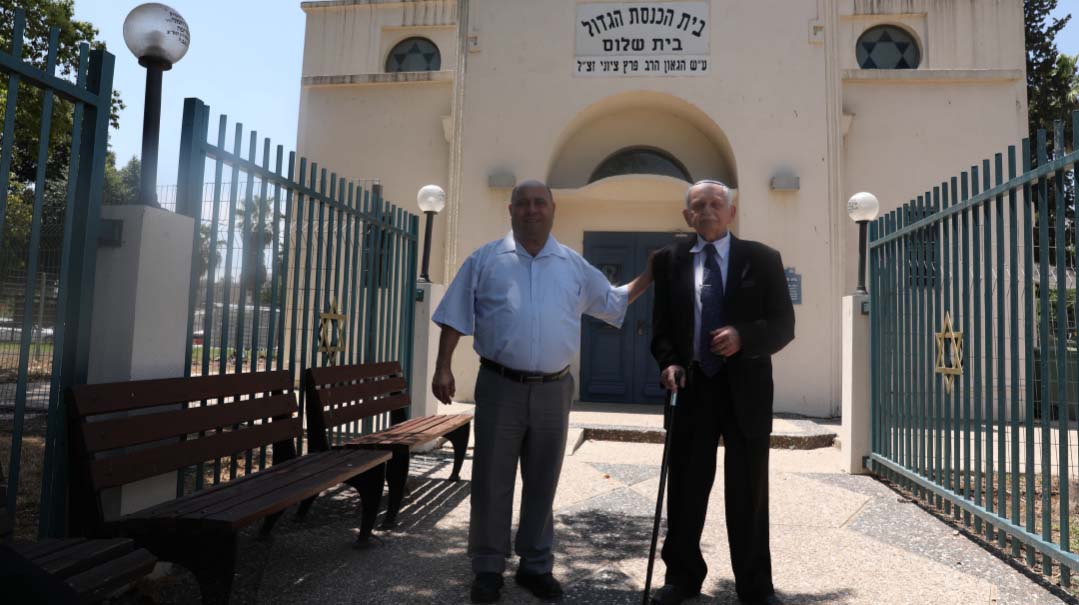
Extra Sweet
Reb Aharon and his brother moved to Israel in 1947, and their mother and sister followed five years later. When he was 23, he married Leah, his wife of 67 years. She passed away a few months ago.
But he still has his beloved shul.
“Everyone in the shul knows Reb Aharon as a dedicated gabbai who takes care of the shul’s every need and really gives his heart to the job,” says Emanuel Ben Sabo, who has joined our conversation. “For instance, while most people donate a few dozen shekels for a Mi Shebeirach, Weiss regularly donates up to a thousand shekels. Over the years he’s replaced the worn furniture and doors, and taken care of every physical aspect.
“Plus,” says Ben Sabo, “he has an eye for the little details that make people happy. For years he’s taken care to provide cold drinks for mispallelim who have just come in from the heat. On Shabbat we always wait for the kiddush with the famous salted fish that he prepares himself.
Reb Aharon looks embarrassed by all the praise and compliments.
“There’s no need to get carried away,” he says. “I’m a person who prefers to give rather than to receive, and HaKadosh Baruch Hu has given me the zechus to give of myself. Whatever is in the shul is thanks to Hashem, not me.”
Reb Aharon, leaning on his cane for support, makes his way to the shul every day, sometimes as early as 4 a.m. to recite Tehillim. And then, out from the shelf by his seat comes a large, crackling bag. He sticks his hand in and pulls out a handful of giant candies, jawbreakers the size of golf balls.
“Take some candy, you can give it to your children,” he beams. “You take some too,” he says as he turns to Ben Sabo.
The children in the shul are happy that they have such a generous candy man, yet who today doesn’t take the sweet treat for granted?
“I want to tell you something,” he says. “One day when I was 15 and a young tailor living in my uncle’s house, my uncle handed me such a candy. At first, I was taken aback — I didn’t know what it was. I had never seen such a treat before. My uncle said to me: “Put it on your tongue and taste it.”
“The flavor exploded in my mouth, and right then and there, I decided that as soon as I got married and established my own family, I would hand out such candy to all the kids and make them happy. And that’s exactly what happened. The day after our wedding, I announced to my wife that I was going out to buy giant candies, and since then I don’t think a single Shabbos has gone by without my distributing some. Hashem sustained us with a few morsels from the garbage, and for this generation, I want to make it extra sweet.
“Help yourselves,” he tells us magnanimously. “It’s no secret that adults also like candy.”
Weiss sits down and sets his walking stick down beside him. There’s silence for a moment, and then he says: “You know, what I’ve just told you is only a fraction of what I went through. There are things that a person can never share — they’ll stay with me and haunt me until my last day. I don’t know how much time I have left, but I do know one thing.
“Throughout my life I’ve always felt Hashem’s Hand — He never forgot me, He’s always been at my side. And He made me a partner in saving others and building new generations. The relationship doesn’t get better than that.”
(Originally featured in Mishpacha, Issue 877)
Oops! We could not locate your form.


